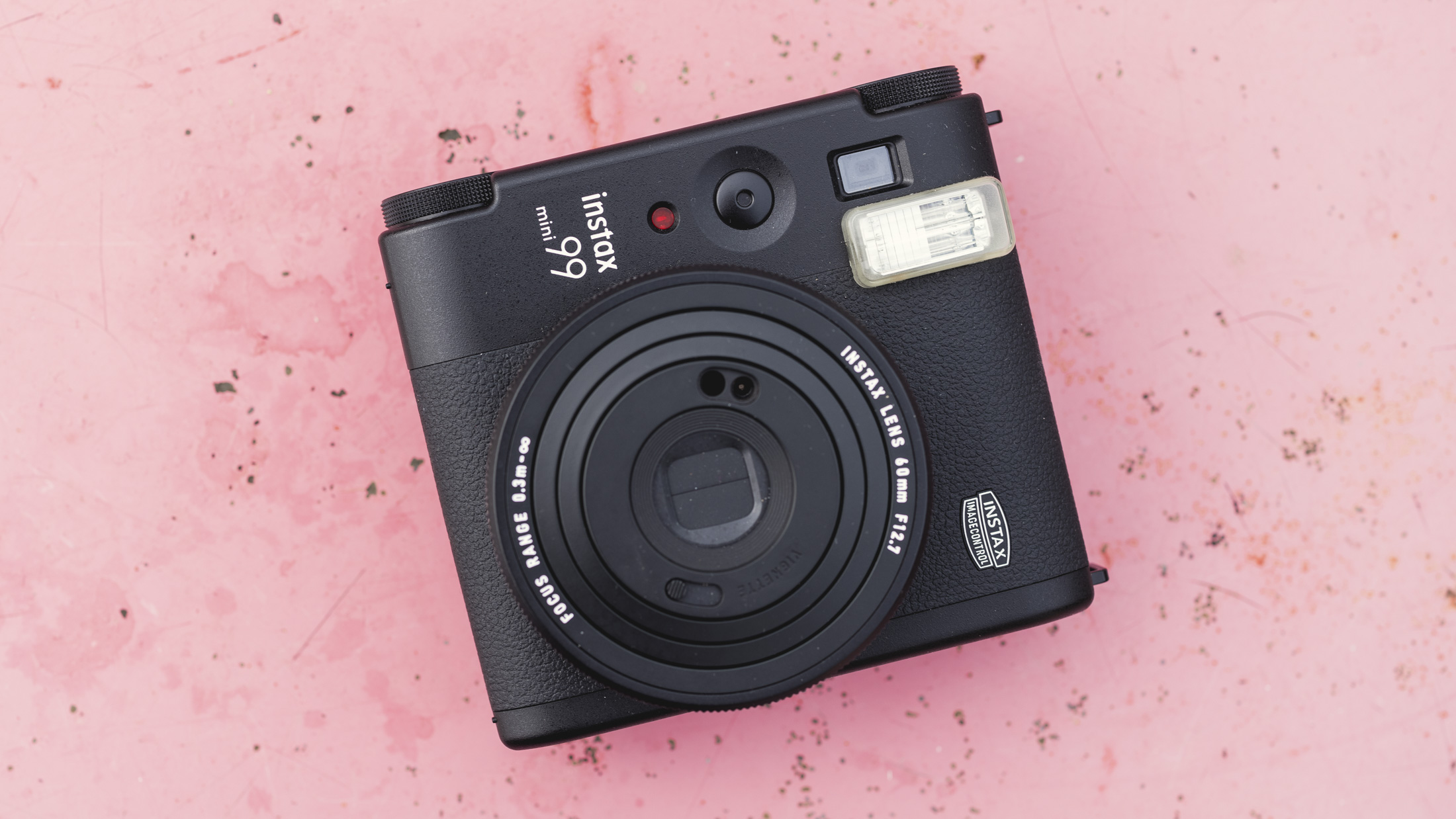
Fujifilm Instax mini 99: One-minute review
The Instax mini 99 is the latest addition to the ever-growing and evolving Fujifilm Instax family. It's a delightful addition to the range, too, and likely to seduce photographers beyond the ‘typical’ Instax crowd, along with anyone with a keen interest in instant photography. Its design, vibe and feature set feel inherently more ‘photographic’ and less ‘toy-like’ than some other Instax cameras.
Not only does it look more serious than its brightly colored cousins, but its range of extra controls and funky effects add to the creative possibilities. You have the option to tweak exposure using the Brightness dial, along with a modest selection of shooting modes such as Sports Mode, Bulb Mode (for long exposures) and even Double Exposure, and the Instax mini 99 really comes into its own with a palette of cool color effects, adding funky hues to your prints by exposing the Fujifilm Instax mini Film to LED lights in the camera.
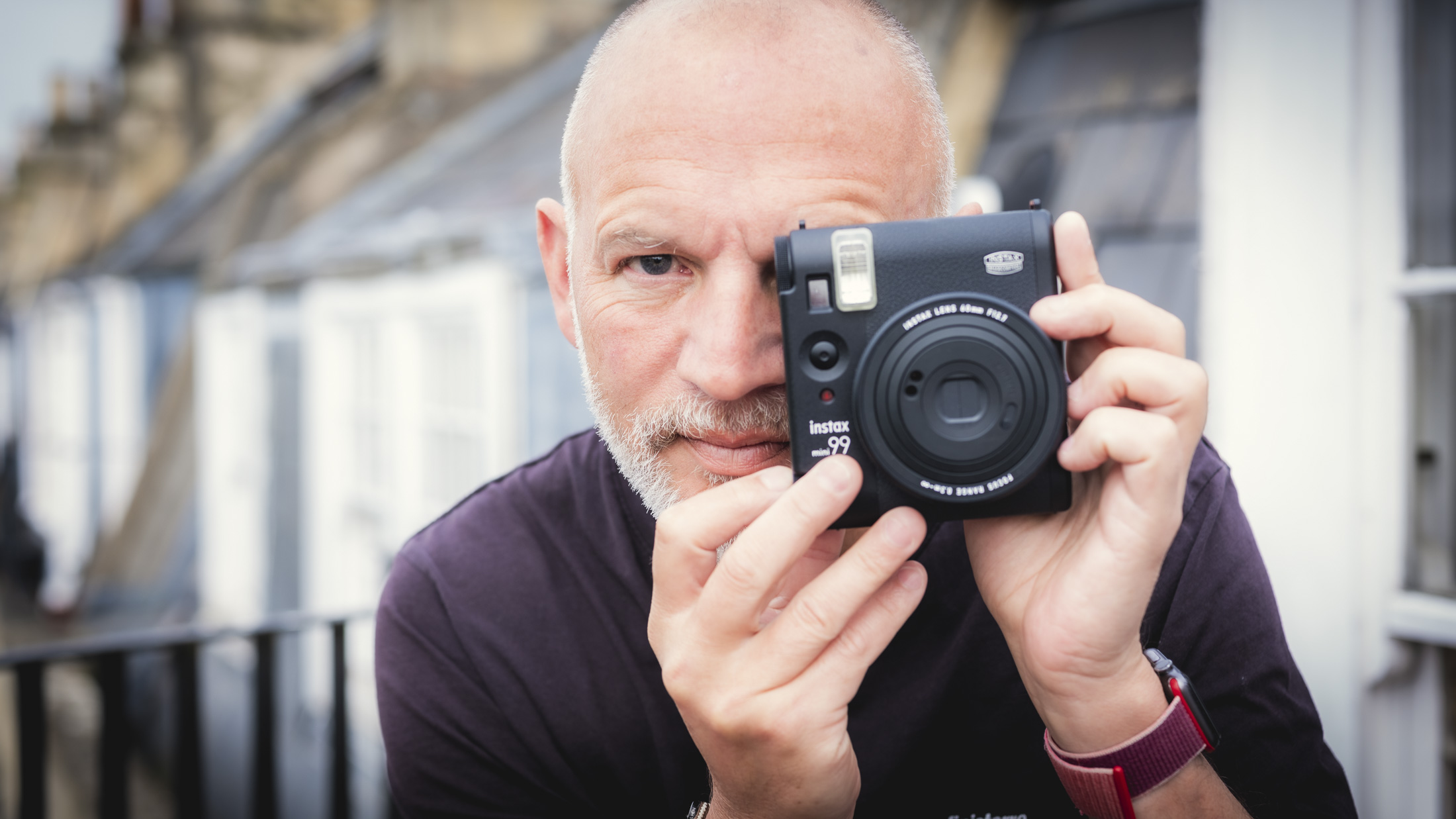
However, while initially seduced, I can't see a compelling reason why I wouldn't plump for a digital hybrid instant camera, such as the slightly more expensive Fujifilm Instax mini Evo, or even the comparatively priced Fujifilm Instax LiPlay. While the Instax 99 might tick the analog box for ‘purists, it’s the tangible-ness of the print that entices me to the Instax cameras, and not necessarily how I got there. The digital hybrids allow for a little less guesswork and, as such, are a more economical option in the long run.
Fujifilm Instax mini 99: design
- Classic retro look
- Lens with a macro mode but no selfie mirror
- Rechargeable lithium-ion battery
The overall design, aesthetics and ergonomics of the Instax mini 99 are lovely. It feels slick and stylish, and it will appeal to ‘photography’ folk more than some of the youth-oriented lollipop color palettes of other instant cameras in the Instax family. It's solid but not too heavy, and it feels well made and balanced in the hand.
The Fujifilm Instax mini 99 is available now and costs $199.95 / £174.99 / AU$279.
You switch on the Instax mini 99 by twisting the lens, and the camera’s three shooting modes – Landscape, Standard, and Macro Focus – are also accessible by twisting the lens. Landscape Mode focuses on subjects positioned at a distance of 3.0m to infinity; Macro Mode is perfect for close-ups and selfies taken at between 0.3m to 0.6m, and Standard Mode covers everything in between. Once the camera was on, I repeatedly forgot to change the lens settings; fortunately, defaulting to Standard seemed to cover most subjects well enough.
The Fujifilm Instax mini 99 is powered by a 680mAh lithium-ion battery, unlike some other Instax models, which use AA batteries. Annoyingly, though, the battery can't be charged through the camera, and you’ll need to remember to take the small charger and USB-C cable with you. This isn't necessarily a hassle, but it is yet another charging accessory to potentially forget, and you’ll be in a real pickle without it.
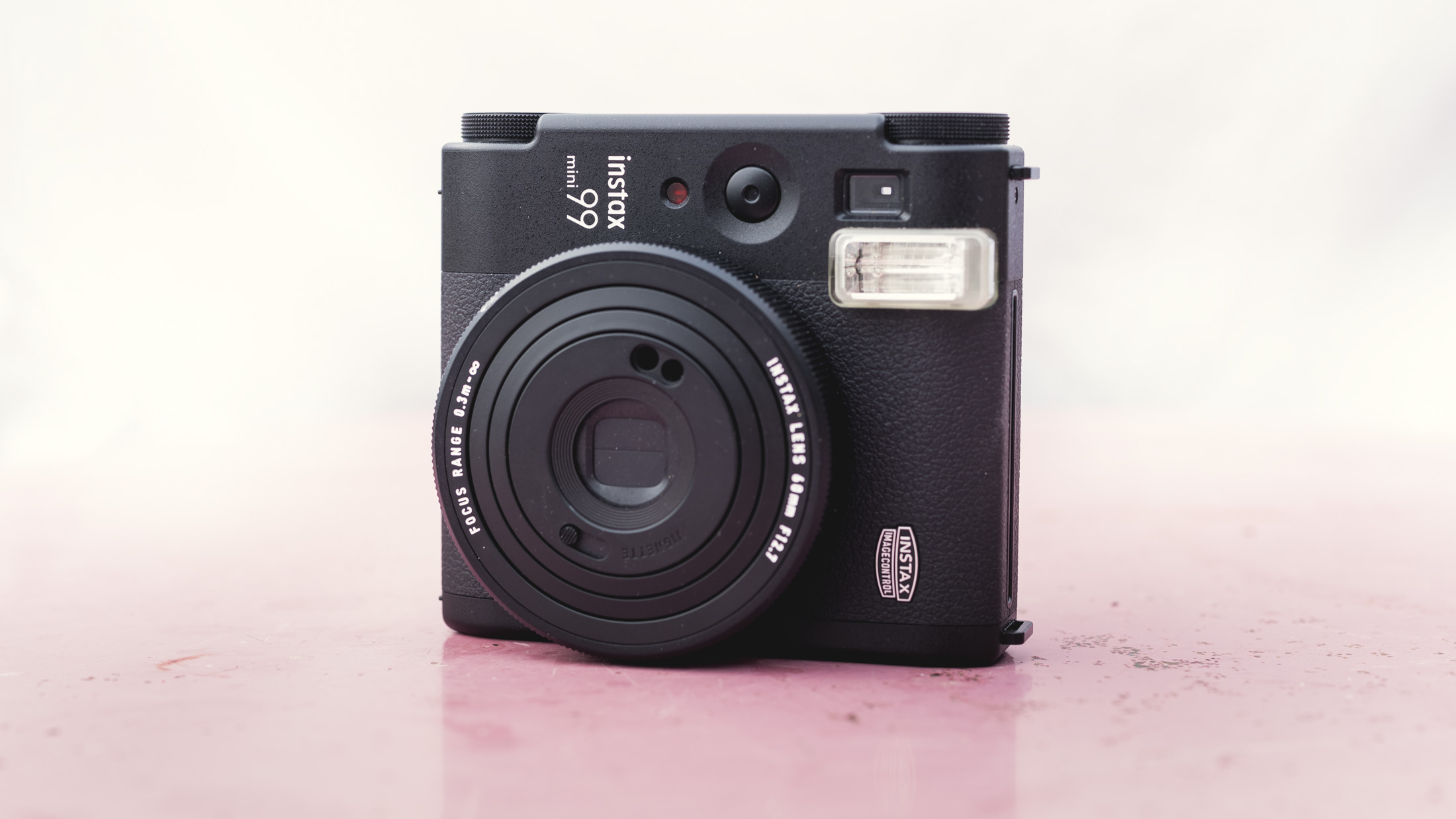
While I’m no stranger to being aware of and dealing with parallax, it seemed harder to calibrate my eye/brain with the Instax mini 99. I guess with more time this would become less of an issue, but the difference of view between the lens and viewfinder seemed especially displaced. The viewfinder, too, felt strangely awkward to look through at first.
The Instax mini 99 is not aimed as directly at the ‘selfie’ audience as other members of Fujfilm Instax family, such as the brightly colored Instax Mini 12; that said, it wouldn’t have been a stretch for Fujifilm to have included a front-facing mirror to help users compose and pose for some more accurate naval-gazing.
Fujifilm Instax mini 99: Performance
- Manual control over brightness
- Fun shooting modes including multiple exposure and color effects
- Handy Instax UP! app to digitize your prints
Unlike other cameras in the Instax range, the Fujfilm Instax mini 99 gives you considerably more control over image brightness, which is great. The Brightness Control dial, which looks and feels like a typical exposure compensation dial (it’s even in the ‘right’ place on the top plate), offers five levels of dark and lightness: the Light (L+) setting selects the brightest exposure; the L, D, and N settings offer a normal range of brightness; and the Dark (D-) setting represents the darkest available brightness level. However, you’ve got to wait 90-odd seconds to see and to assess exposure, which can be frustrating. However, this is really just part of the slow, mindful, creative experience, which is fundamentally a good, albeit a relatively expensive, thing. Generally, in ‘normal’ conditions, I found ‘underexposing’ by one value to work best.
Film type: Fujifilm Instax mini film
Print size: 62 x 46mm
Lens: Retractable lens, 2 components, 2 elements, f = 60mm, 1:12.7
Shooting range: Manual 3-point switching type (0.3m to 0.6m/0.6m to 3.0m/3.0m to ∞) Shooting range: 0.3m to ∞
Battery: NP-70S, charged through USB-C
Dimensions: 103.5 x 117.5 x 60.0mm
Weight: 340g
The Instax mini 99 comes into its own with some fun and funky shooting modes, with a wide variety of options to enhance the shooting experience. Indoor Mode is designed for low-light situations, Sports Mode increases the shutter speed for action shots, Double Exposure Mode lets the user combine two images into one, and Bulb Mode increases the amount of light let in when shooting a night view, for example. I gravitated to Multiple Exposure as the most potential fun, but I ran out of Instax mini color film before I’d nailed the technique.
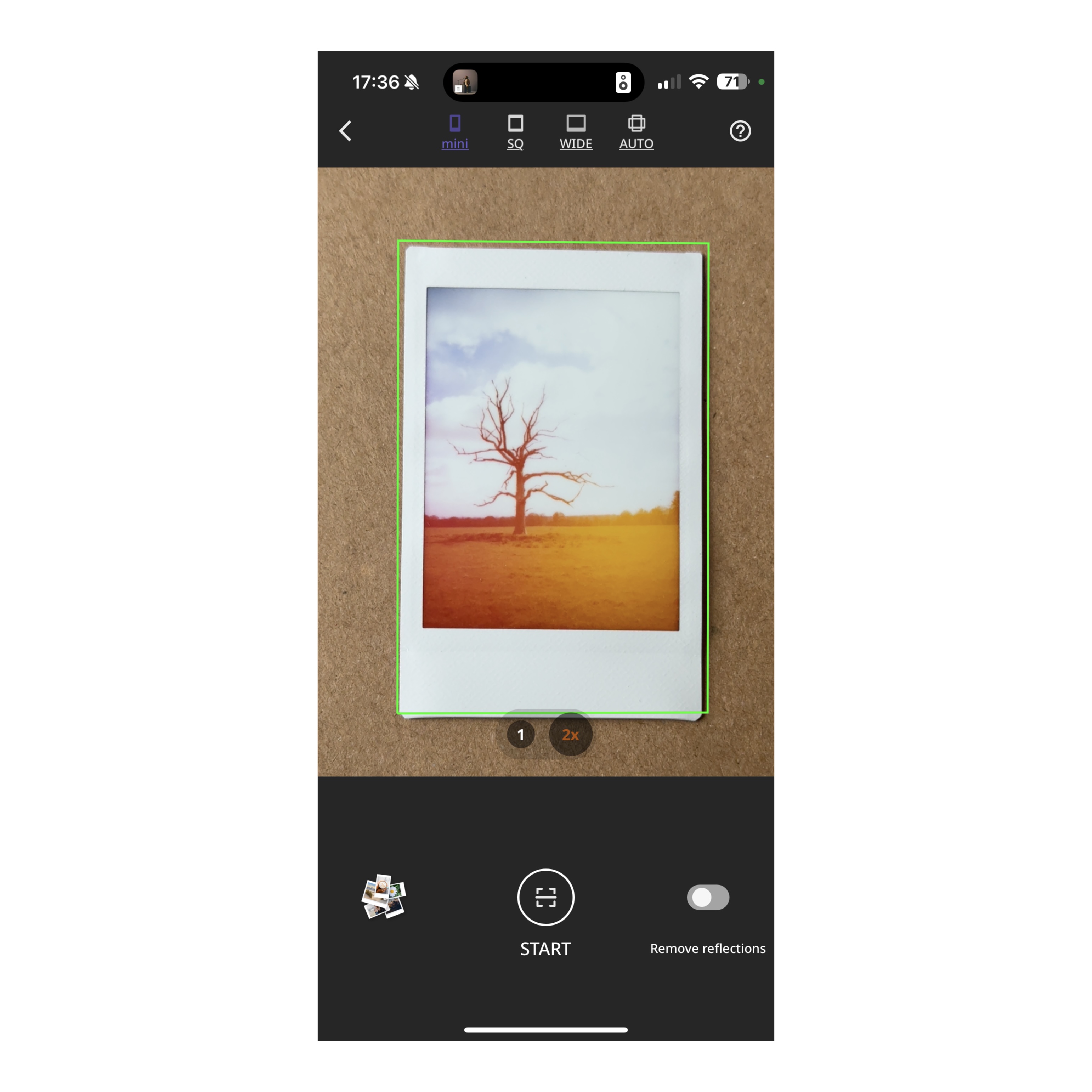
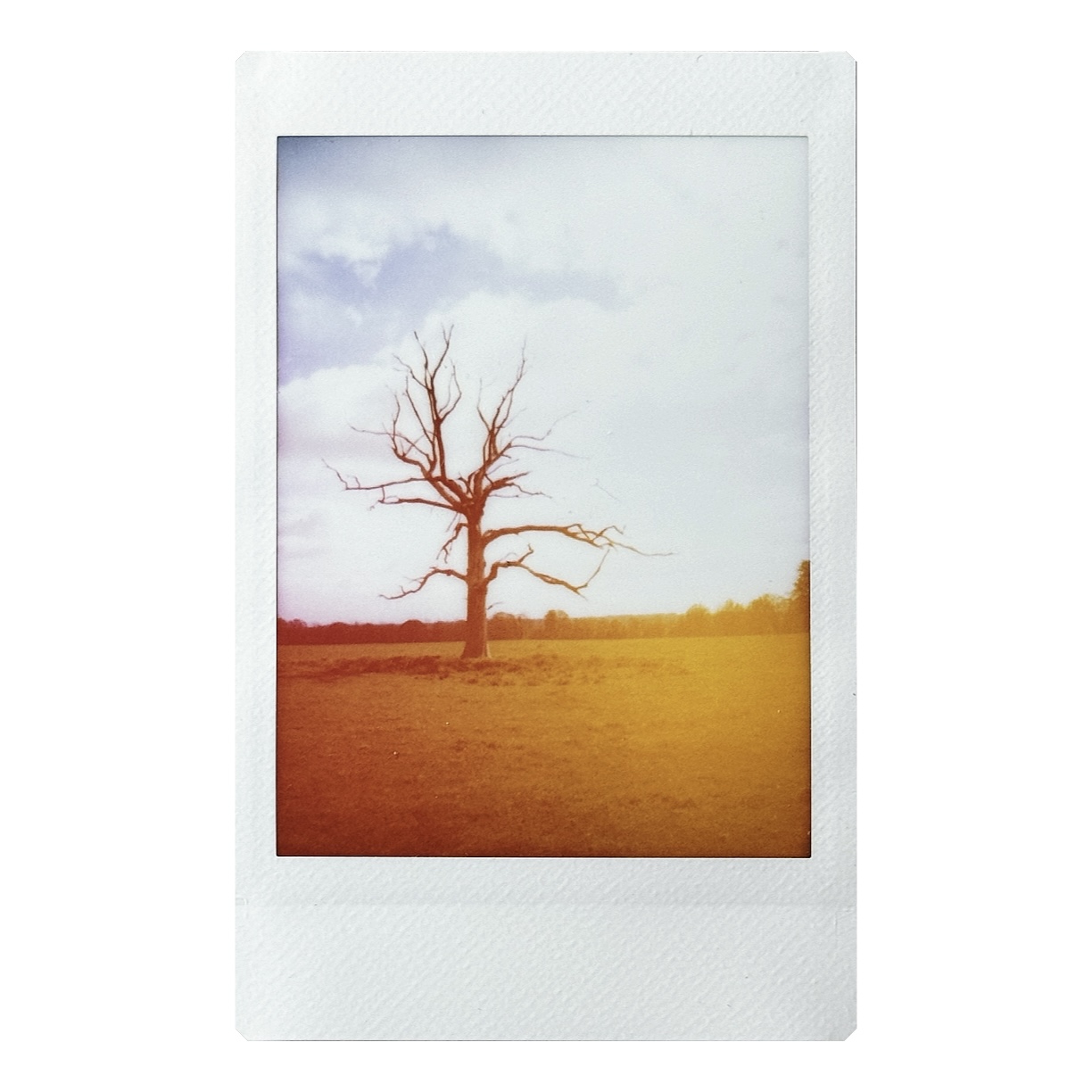
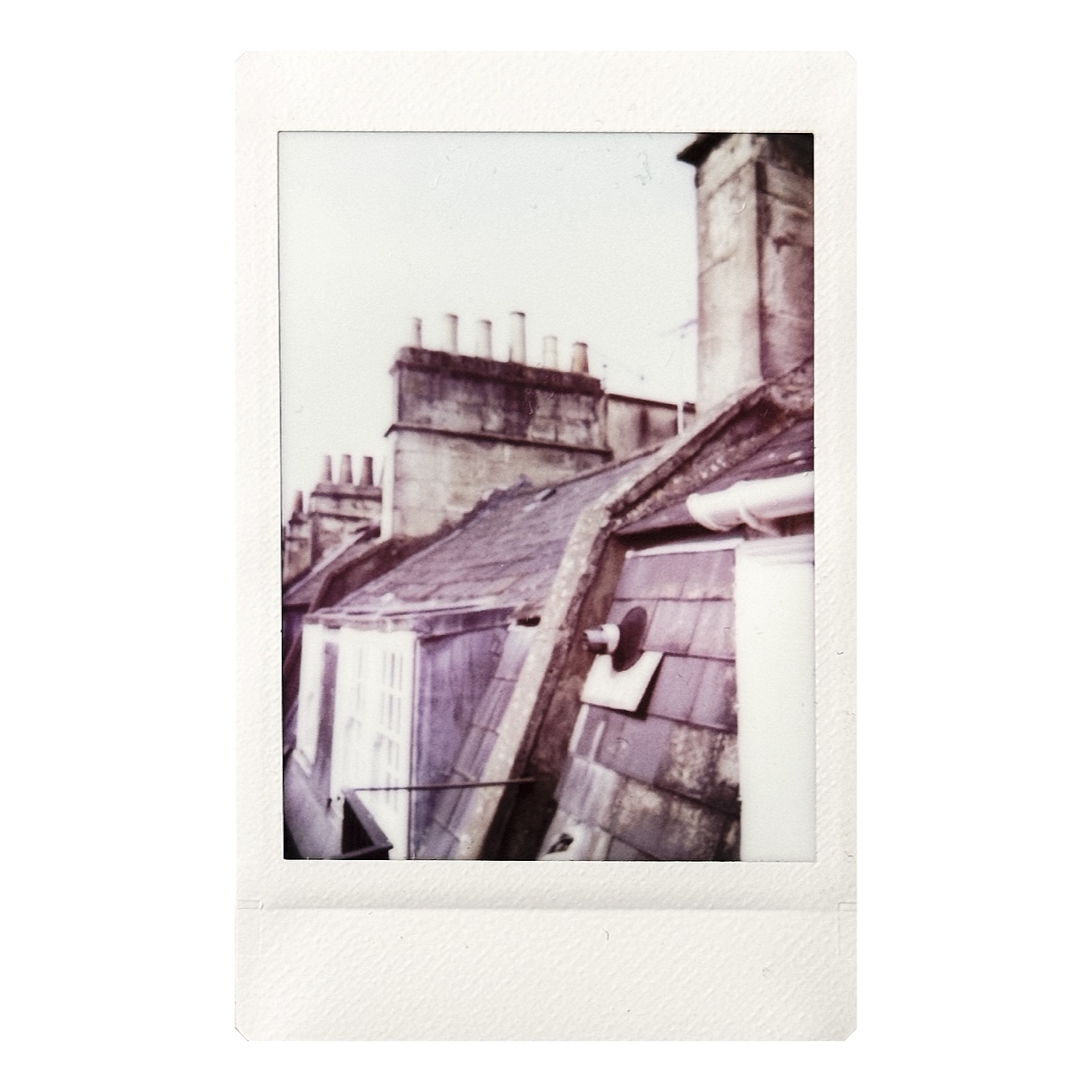
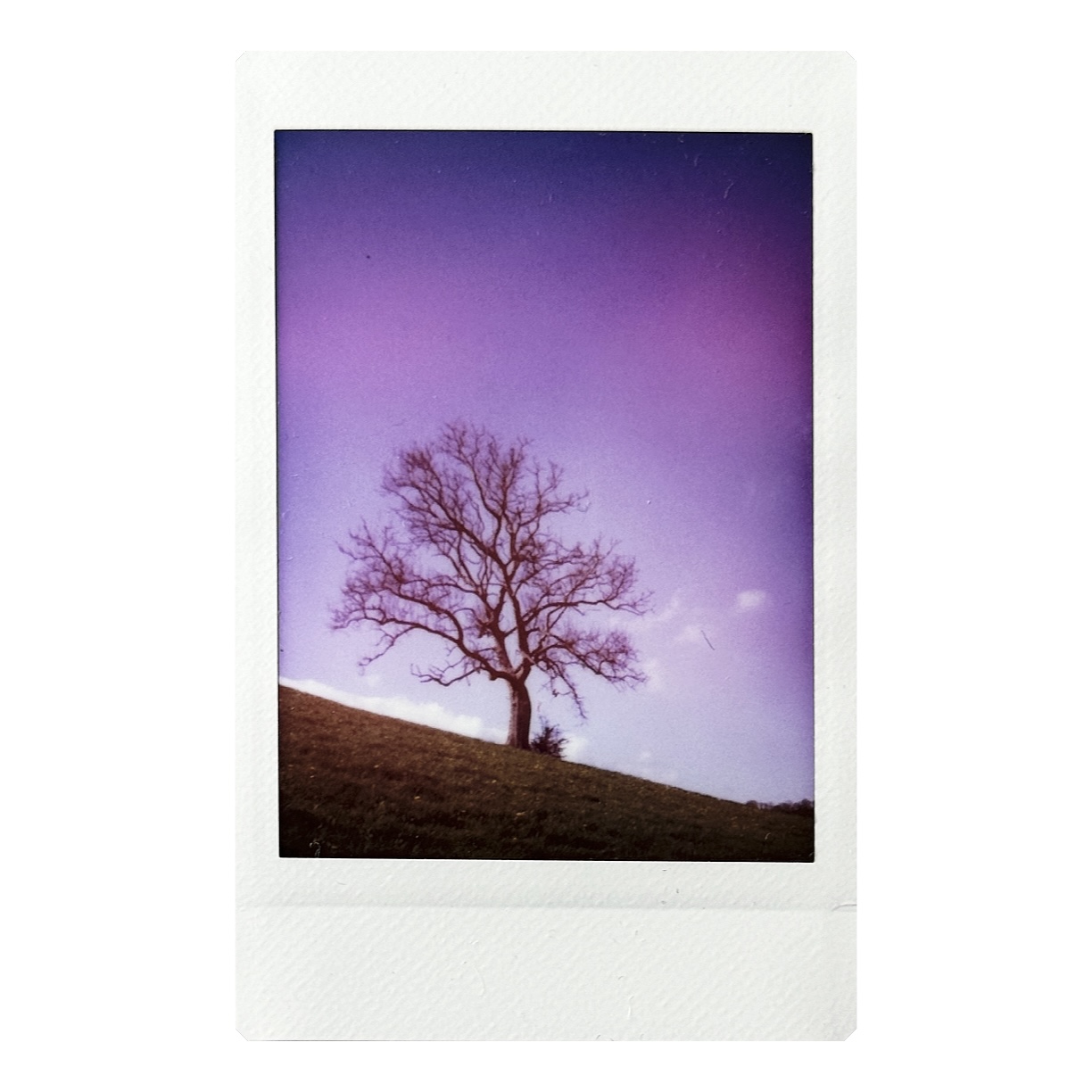
When you want to really flex your creative muscles, the Instax mini 99 features a cool creative palette of fun and funky color effects, which are accessed via the Effects dial on the top plate. You can select from one of six snazzy looks: Faded Green, Warm Tone, Light Blue, Soft Magenta, Sepia, and Light Leak. Light Leak was my favorite.
Unlike the Instax mini 99’s hybrid digital cousins, the effects are cleverly driven by LED lights inside the camera; the Colour Effect feature exposes the chosen color onto the Instax mini instant film, creating the desired effect on the print. It's pretty clever, and very cool. The effects are marginally cooler than similar ‘emulated’ effects on some of the Instax digital hybrid cameras; it's only a small margin, but you will bag more analogue kudos points.
The Vignette switch is an interesting new function. Located on the lens housing, it can darken the corners and edges of the frame for artistic purposes. It’s a nice touch.
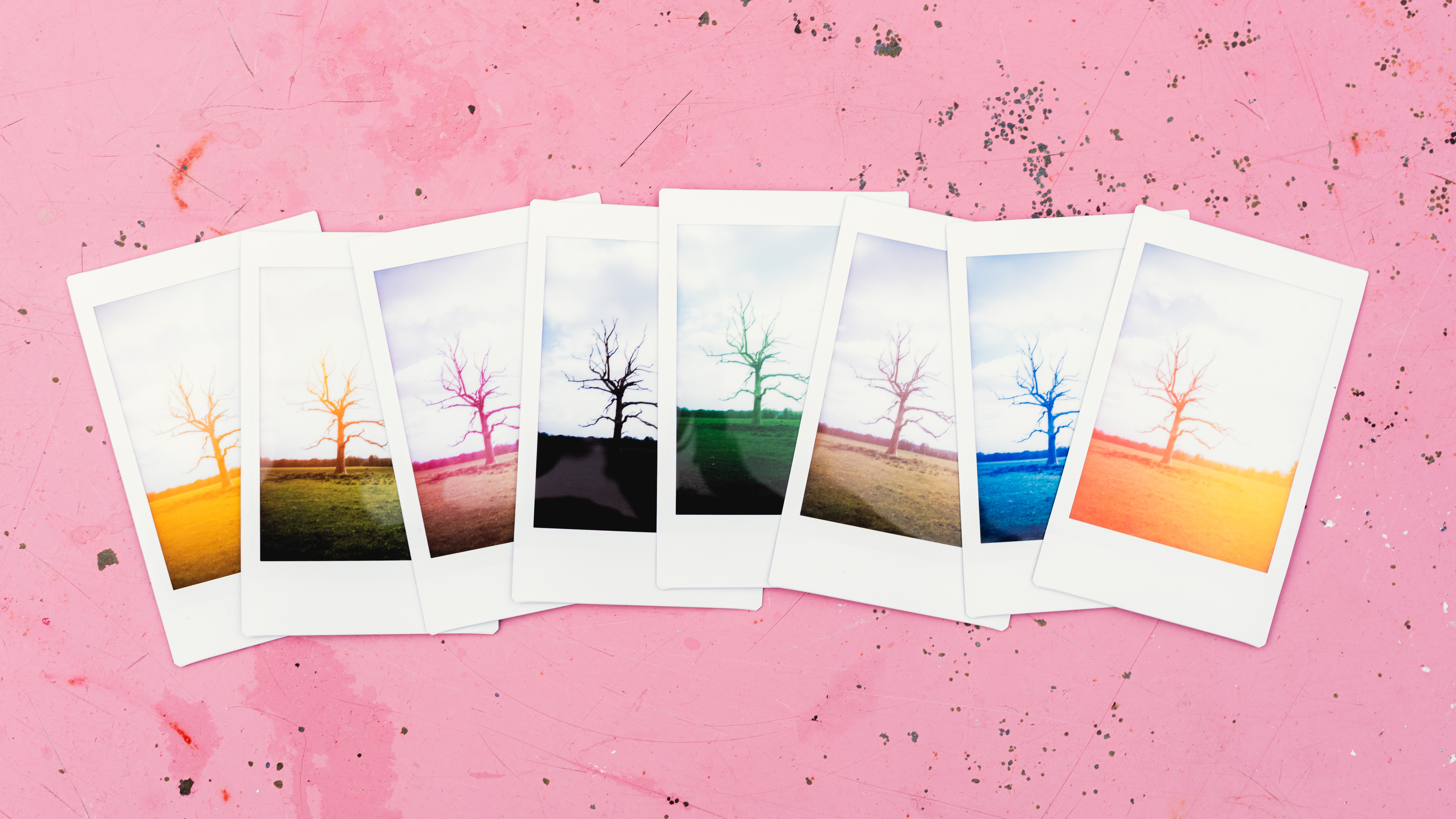
Making instant prints will always be more expensive, period. That said, Instax mini prints do offer the best value for money. A twin-pack of Instax mini color film, each containing 10 exposures, costs $20.99 / £14.99 / AU$28, and in this digital day and age it’s making an actual physical print that makes Instax such a delight. However, if you want to digitize your instant photo print, you can scan and share on social media platforms using (another) new app released by Fujifilm called INSTAX UP! The smartphone app most usefully allows you to scan your work, crop to the corners, and even remove reflections. It also has a bunch of album features, enabling users to organize, store, and share their digital Instax photos. I found the scanning feature the most useful.
Should I buy the Fujifilm Instax mini 99?
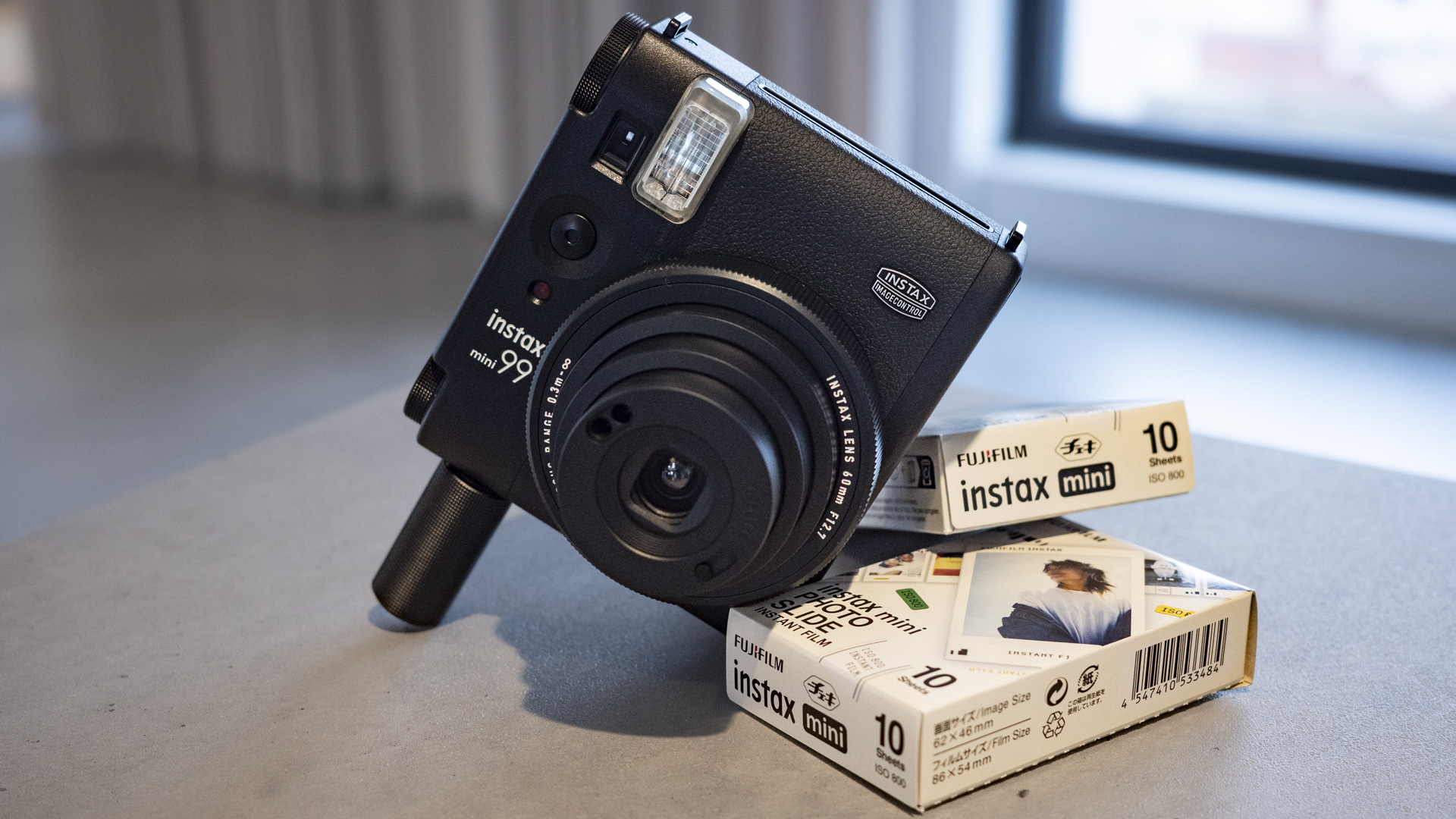
Buy it if...
Don't buy it if...
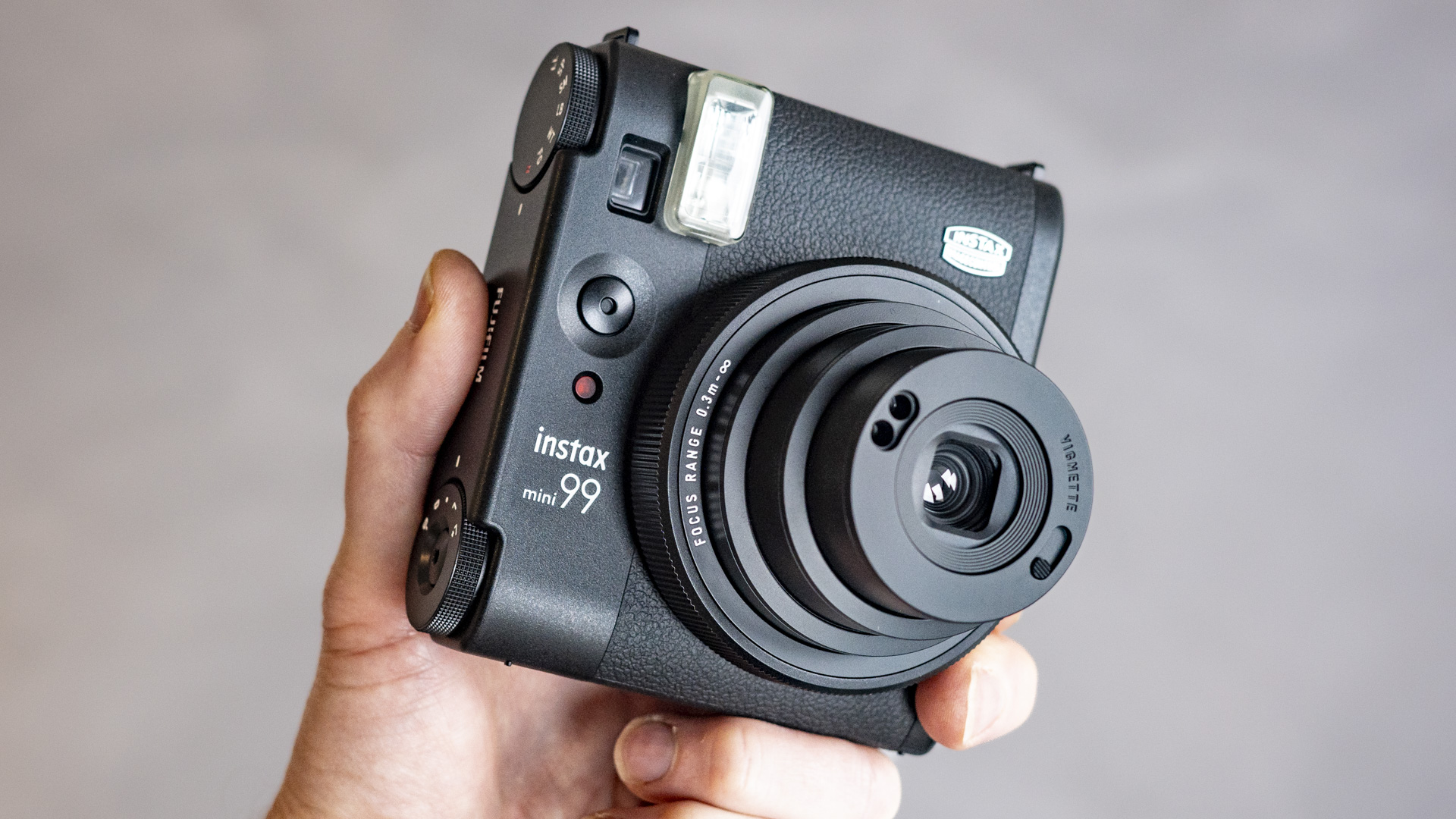
How I tested the Fujifilm Instax mini 99
- I used two packs of Instax Mini film
- I tried all the creative color effects
- I experimented with the Shooting Modes
Using the Fujifilm Instax camera for a week with two packs (20 shots) of Instax mini film, I carried the camera with me on several walks in and around my local area - South-West UK. Unlike its digital hybrid cousins, such as the Instax Evo, I had to be more considerate, mindful, and measured in my shooting, as every click of the shutter cost money. This slightly discouraged the spirit of experimentation, and every action was tinged with economic anxiety. Just like life! That said, working on location and waiting 90 seconds to see results was also a refreshing and exhilarating way to work in the field. It encouraged a slow and considerate approach to photography, which I think is good.
First reviewed May 2024







